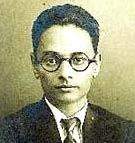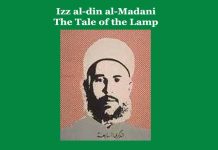R K Narayan | Lawley Road | An Analytical Study
R K Narayan | Lawley Road | An Analytical Study
R K Narayan | Lawley Road | An Analytical Study
‘Lawley Road’ is a satirical short story written by R. K. Narayan (1906-2001) an Indian English short story-teller and novelist. The main theme of the story is arbitrariness, corruption and the showy nature of the Indian officials, especially of the Municipal Chairman of the town of Malgudi, a fictitious but typical Indian town.
The main theme revolves round the Municipal Chairman. He is good for nothing fellow. He is negligent in his duty. His only aim is to retain his office somehow. But on the occasion of the celebration of the Indian Independence, he woke up and thought to do something great, and to mark off this great event he undertakes some tasks to attract the attention of the nation which would prove whimsical and arbitrary.
First, the Municipal Council swept away the streets, cleaned the drains and hoisted the flags all over the place. One day he called up an Extraordinary Meeting and decided to nationalize the names of all the streets in honour of the birth of independence. They made the start with the park at Market Square. It used to be called the Coronation Park and was declared to be ‘Hamara Hindustan Park’. All the roads were renamed and consequently, the town became unrecognizable
After this, the Chairman became restless again and looked for fresh fields of action. Then the Chairman suddenly made out a plan to shift the statue of Sir Frederic Lawley. The extension had been named after him. Now it was changed to Gandhi Nagar and the Council unanimously resolved to remove it. But it became a problem to uproot it as it was so vast and heavy some twenty feet high. Later on, a news reporter who was well acquainted with the Chairman got bought it and eventually, it was shifted with much difficulty to the house of the news reporter. But no longer it was shifted all the land became agitated and stood against this task. Eventually, after the suggestion of the news report, the Chairman was compelled to purchase the household of the reporter and declared it as a National Trust and kept the statue in its new place and the Municipal council resolved that Kabir Lane would be changed to Lawley Road.
Thus through the story, the author has given a vivid account of the follies and whimsical activities of the Municipal Council in a satiric vein giving rise to humour.
There are two main Characters. Both the characters are portrayed as types. The Municipal Chairman is selfish, corrupt and a worthless person. The deeds that he undertakes are all whimsical and arbitrary. The other important character of the story is the news reporter who is also of the same nature. He suggests the Chairman to follow some extraordinary works to attract the attention of the town but resultantly all prove to be foolish.
The author has employed the Subjective Method in narrating the story. In this method, the author becomes a character of his story and tells his story in the first person.
The story, in Structure, is well one. The exposition is direct. The complication of the story begins with the changing of the names of some streets of the town and it reaches its climax when the statue of Sir Frederic Lawley is sold and shifted to the news reporter’s household. The denouement of the story meets when the same statue is taken back because of nation wise public agitation.
The Setting of the story is consistent with the events and situation. The author gives a good deal of description of the atmosphere and manners of his characters.
The Dialogue employed in the story is very logical as he uses them economically but all the dialogues have taken his story a step ahead and unfold the inner nature and motives of his characters.
The author has expressed his Philosophy of Life not directly but indirectly through the story and suggests that the political leaders are full of corruption; the nation can hope for nothing good from them.
The Language of the story is very simple as it is characterized by the use of simple, concrete and formal words and phrases, free from complicated sentence construction and harsh imagery.
All the Qualities of a good short story as — unity of purpose, brevity, spontaneity and universality are present in it. The brevity is also maintained throughout the story as all the component elements of a good short story are employed in the story with the possible economy. Thus the universality is achieved by means of the reliable representation of the event. The story begins and ends with spontaneous logical order through proper stages.
As a short story, its Length is ideal as —neither very short nor too long. 0 0 0.
R K Narayan | Lawley Road | An Analytical Study
Read More: Leo Tolstoy’s Short Stroy ‘God Sees the Truth But Waits’-An Analytical Study
N. B. This article entitled ‘R K Narayan | Lawley Road | An Analytical Study’ originally belongs to the book ‘World Short Story Criticism‘ by Menonim Menonimus. R K Narayan | Lawley Road | An Analytical Study
Books of Literary Criticism by M. Menonimus:
- World Short Story Criticism
- World Poetry Criticism
- World Drama Criticism
- World Novel Criticism
- World Essay Criticism
- Indian English Poetry Criticism
- Indian English Poets and Poetry Chief Features
- Emily Dickinson’s Poetry-A Thematic Study
- Walt Whitman’s Poetry-A Thematic Study
- Critical Essays on English Poetry
- Tawfiq al-Hakim’s Novel: Return of the Spirit-An Analytical Study
- Tawfiq al-Hakim’s Novel: ‘Yawmiyyat Naib Fil Arayaf’-An Analytical Study
- Analytical Studies of Some Arabic Short Stories
- A Brief History of Arabic Literature: Pre-Islamic Period …
Books on Linguistics by M. Menonimus:
- A Brief History of the English Language
- Essays on Linguistics
- My Imageries
- Felicitous Expression: Some Examples
- Learners’ English Dictionary
Related Searches:
- Short Stroy Criticism
- The Indian English Short Story
- Individual and Society …
- ‘Deliverance’ by Premchand Analysis
- Summary of Rabindranath Tagore’s ‘The Exercise Book
- Short Story ‘Yellow Fish’ Essay Example
- Notes on Roger Mais’s ‘Blackout’
- ‘Blackout’ by Roger Mais
- ‘The Dog of Tetwal’ Saadat Hasan Manto
- The Three Questions
- R. K. Narayan Biography, Books
- Short Stories R. K. Narayan
- ‘Lawley Road’ by R K Narayan …











